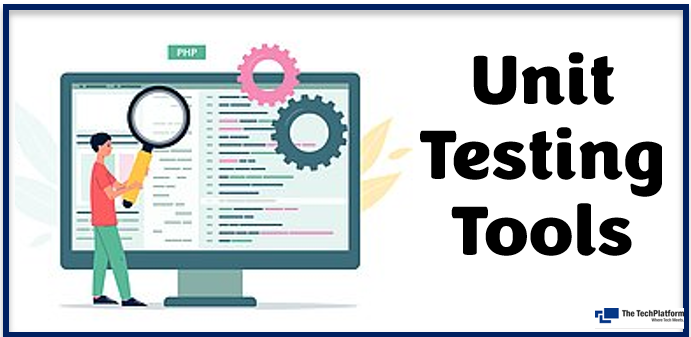What is Test Maturity Model (TMM) in Software Testing?
- The Tech Platform

- Apr 22, 2021
- 3 min read
Updated: Mar 22, 2023
The Test Maturity Model (TMM) is a framework for evaluating and improving the maturity of an organization's testing processes. It is designed to help organizations assess their current testing practices, identify areas for improvement, and develop a roadmap for improving their testing maturity.
The Test Maturity Model (TMM) is based on the Capability Maturity Model (CMM) and it was first developed by the Illinois Institute of Technology. It is a detailed model for test process improvement.
Each level of the TMM consists of several components, including:
Test Policy and Strategy: This component defines the overall approach to testing and the testing goals for the organization. It includes the development of a testing policy and a testing strategy that aligns with the organization's overall goals and objectives.
Test Organization: This component defines the structure and roles of the testing organization. It includes the development of job descriptions, training plans, and career paths for testers and test managers.
Test Planning: This component defines the processes and procedures for test planning, including the development of test plans, test cases, and test scripts. It also includes the identification of test resources and the establishment of testing schedules.
Test Execution: This component defines the processes and procedures for test execution, including the execution of test cases, the logging of test results, and the tracking of defects. It also includes the development of test automation scripts and the management of test environments.
Test Measurement and Analysis: This component defines the processes and procedures for measuring and analyzing test results, including the collection of test metrics and the identification of trends and patterns in test results. It also includes the use of statistical methods to analyze test data and the development of test dashboards and reports.
Test Process Improvement: This component defines the processes and procedures for continuous process improvement. It includes the identification of areas for improvement, the development of improvement plans, and the implementation of process improvements.
Test Tools and Infrastructure: This component defines the tools and infrastructure required to support testing processes. It includes the identification of testing tools, the development of a testing infrastructure, and the establishment of testing standards and procedures.
Different Levels of Maturity Model
The TMM provides a set of guidelines and best practices for evaluating the maturity of an organization's testing processes. It includes a series of assessments that help organizations determine where they stand on the TMM scale and what steps they need to take to reach higher levels of maturity.
Here are the five levels of the TMM in more detail:
Initial: In the initial level, testing is typically ad hoc, with no formal processes or procedures in place. Testing is reactive rather than proactive, and there is little or no documentation of test plans or results.
Managed: At the managed level, testing becomes more formalized, with some processes in place for planning and executing tests. Testing is still largely reactive, but there is some documentation of test plans and results.
Defined: At the defined level, testing processes become more structured, with well-defined processes and procedures for planning and executing tests. There is a focus on continuous improvement, with processes for measuring and analyzing test results.
Quantitatively Managed: At the quantitatively managed level, testing processes are measured and analyzed to improve efficiency and effectiveness. Metrics are used to evaluate the effectiveness of testing processes, and there is a focus on optimizing the testing process.
Optimizing: At the optimizing level, testing is fully integrated into the software development life cycle, with a focus on continuous process improvement. Testing processes are fully automated, and there is a culture of innovation and experimentation.
Difference between Capability Maturity Model (CMM) & Test Maturity Model (TMM)
CMM | TMM |
|---|---|
A framework for improving software development processes | A framework for improving testing processes |
To assess and improve the maturity of software development processes | To assess and improve the maturity of testing processes |
Overall software development process | Testing process specifically |
5 levels, from initial to optimizing | 5 levels, from initial to optimizing |
Level 1: Initial, Level 2: Repeatable, Level 3: Defined, Level 4: Managed, Level 5: Optimizing | Level 1: Initial, Level 2: Managed, Level 3: Defined, Level 4: Quantitatively Managed, Level 5: Optimizing |
Software development process as a whole, including project management, software engineering, and support processes | Testing process, including test planning, test execution, and test analysis |
Improves software development processes, resulting in higher quality software products that meet customer needs and expectations | Improves testing processes, resulting in higher quality software products that meet customer needs and expectations |
Involves a series of assessments, followed by a roadmap for improvement | Involves a series of assessments, followed by a roadmap for improvement |
Software development organizations | Testing organizations, including testers, test managers, and quality assurance professionals |
Created by the Software Engineering Institute (SEI) | Created by the Illinois Institute of Technology |
Conclusion:
Software maintenance is expensive and time-consuming when defects are identified after project delivery. Consequently, while detecting defects is important, it is also important that software makes minimum errors during the development phase. A standard testing process like TMM can help to achieve this. TMM (Testing Maturity Model) which is specially designed to address testing can help the organization improve the maturity of its testing practices.




Comments